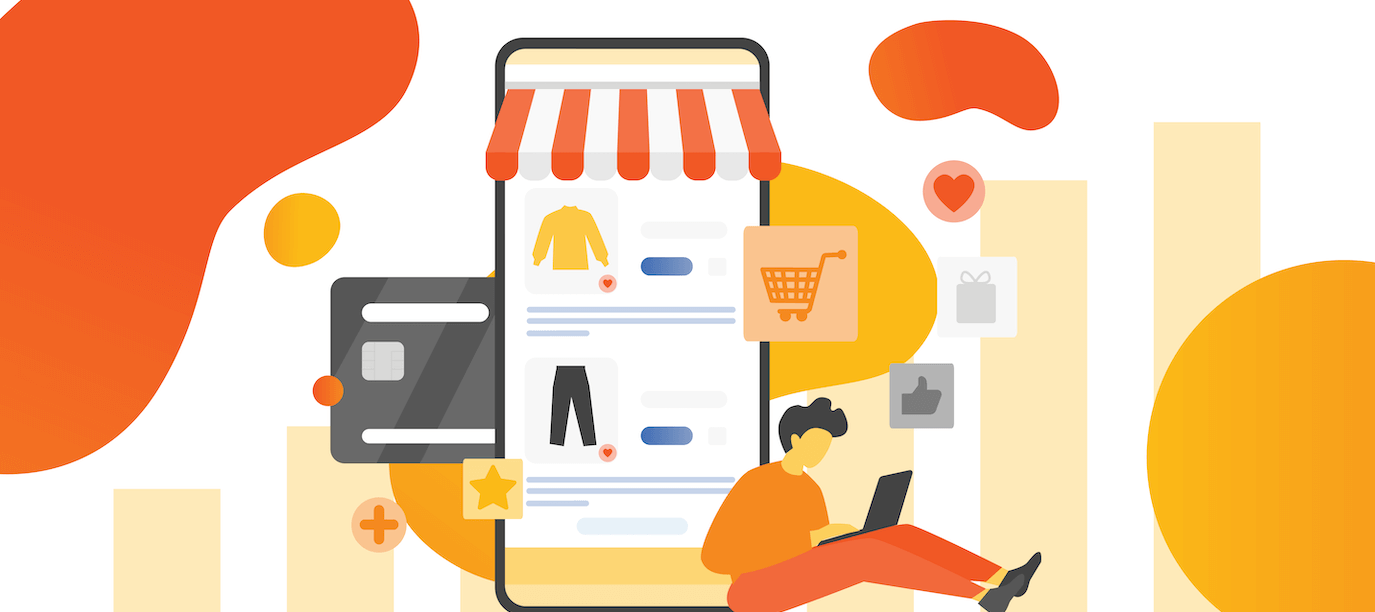
Key Tactics to Increase eCommerce Conversion Rates
eCommerce conversions don’t just happen overnight (not often, anyway), and set-it-and-forget-it tactics for your online store, no matter what product or service you’re selling, will only get you so far. Every visitor to your website who leaves without converting is one more missed opportunity that’s likely due to a lack of (or poor execution of) conversion tactics.
Measuring, testing, and optimizing your eCommerce platform – from website design and customer communication to the checkout process – takes dedication and willingness to experiment. Before you put in the effort, give this blog a quick read. We’re supplying you with several key practices to increase eCommerce conversation rates.
What Makes a Quality eCommerce Conversion Rate?
Before we get into what may be holding your company’s eCommerce conversion rates back and how to convert more customers, let’s talk about what an eCommerce conversion rate is, and what makes it seen as “successful”.
An eCommerce conversion can be a variety of things – a newsletter or rewards program sign-up, adding something to a wish list or shopping cart, making a purchase, or something else. The most sought-after and most commonly referred to eCommerce conversion is a sale, but many programs will record all of the above. Before measuring, make sure you can differentiate between these conversion types and get the information you’re looking for.
Conversion rate is calculated using the following equation:

Across the internet, there are various findings when it comes to the “most common”, average conversion rate – ranging from 1 – 5%. According to BigCommerce, “Even if you are doing everything right, you can still expect to win the sale around 2-3% of the time,” so ultimately, your goal should be a 2-3%+ baseline conversion rate. With that said, your company’s specific optimal conversion rate will vary based on several variables. These variables include, but are not limited to, the product or service, industry, product pricing, and target demographics.
Top Reasons Why Customers Don’t Convert
In an ideal world, a customer visits your site, finds the product(s) they need and/or like, and finally, makes a purchase – but this sequence is rarely the case. Here are some top reasons customers don’t convert:
- Your site makes a bad impression
- You don’t know your target audience and/or have not conducted enough research
- Your site isn’t optimized and hasn’t been tested
- Your images are bad and/or poor quality
- Your copy isn’t persuasive
- Your site’s pages are confusing or distracting
- The CTAs aren’t clear
- There’s a lack of trust
- Your site has a confusing checkout
- There are no retargeting efforts
- Your site has outdated UI/UX design
…among others.
Key Tactics to Increase Your eCommerce Conversions
Although the barriers to conversion above are common, your company doesn’t have to fall short. Here are several ways to increase eCommerce conversions:
Encourage Loyalty
You’re likely aware that loyalty programs can generate a ton of value. In fact, research shows that “43% of customers spend more on the brands they feel loyal to.” Brands that have high customer loyalty spend more time and money on customer lifetime value (CLV) through creating a community of loyal followers. Offer long-term benefits to customers (such as evolving their customer tier with every purchase and increasing their rewards), and customers will convert more often. Additionally, celebrate customer milestones with rewards, and/or give loyal customers early access to products. The more repeat, loyal customers, the better your conversion rate.
Optimize the Speed of Your Site
A Walmart study found that “conversion rates drop sharply with load times greater than one second.” An additional study found that 53% of your customers will leave your site if a page takes more than two seconds to load. And another study found that “even a delay of a single second can result in a 7% reduction in conversions.” There’s really nothing worse than losing customers to slow site speed. Don’t worry, as there are tools to test and negate this issue, such as Google PageSpeed. Additionally, if your site seems slow, check its hosting plan, because it may have speed limitations. Lastly, check image sizes, as they may be too large, causing your pages to load slowly.
Add Areas of Proof
Show potential buyers that what they’re buying is truly a good purchase – and that you have the content to prove it. Provide case studies, testimonials, pictures, and reviews. “User-generated content is a goldmine—85% of consumers find them more influential than brand images or videos and 43% say it’s a great way to discover new products.” Including an area on each product page with images and text from real customers, or – a step further – “verified buyers” (accompanied by verified badges) can help increase conversions astronomically. After all, people not only look over, but trust these resources, with “92% read(ing) online reviews and testimonials when considering a purchase.”
Offer Free Shipping
A free shipping offer (especially at checkout) can increase conversions by making potential buyers feel like they’re getting an exclusive deal. Additionally, it’s been found that “free shipping that helps customers save $6.99 is more valuable than a $10 price slash…” Try offering this special discount at checkout, or upon exit intent.
Recover Abandoned Carts
Speaking of exit intent…around 35% of abandoned carts could have been avoided by checkout optimization, changes in product content, or site improvements. It’s important to make sure if a customer does attempt to exit without converting, that you aim to recover their abandoned cart with a cart abandonment marketing strategy in place.
Use Pop-up Windows
As we mentioned earlier, offering a discount upon exit intent gives you a fighting chance to stop the customer from leaving. Do this in a pop-up window, and you’re more likely to get the customer’s attention and keep them on board. Use pop-up windows to supply coupon codes, or have the visitor enter their email and be sent a code (which can additionally help you grow your mailing list and increase future conversions, as well).
Gamified email pop ups are also popular and seen as one of the most effective ways to convert eCommerce site visitors, as they create nostalgia and excitement. “With gamification, the user drops (their) reluctance to buying or subscribing to another newsletter, and by playing on the ecommerce platform (they create) a special and unique relationship with the brand.” Some examples of gamification tools are guessing games, wheel spins, or brain teasers to receive a discount or free item.
Make Yourself Available
Don’t miss out on a potential purchaser just because you weren’t able to answer a simple question. Make it easy for current and potential customers to contact you or acquire needed information, whether that’s by phone, email, or a chat. We’d recommend almost always including a live chat option, as “42% of customers prefer live chat compared to just 23% for email and 16% for social media or forums.”
Additionally, think about including an FAQ section or an area with support articles, how-to videos, and email or push notifications for new updates and offers. Communication is key. “Positive experience drives return visits and conversions – 74% buy based on experiences alone.”
Create Urgency
You’ve likely seen this one used more and more these days. Many companies are using persuasion triggers like time limits, scarcity of product, and product interest to increase excitement and urgency around specific products. Some examples of these persuasive phrases are:
- Selling fast!
- Only __ left!
- Currently in __ shopping carts
- __ shoppers are looking at this product
- __% off for a limited time!
- Best seller
- “Influencer Name’s” Pick
- Editor’s pick
- Trending on “social platform”
Many people easily feel FOMO (fear of missing out), enjoy the feeling of obtaining something exclusive, and feel pressure to make quick decisions. Use these human instincts to your shop’s advantage!
Provide a Snippet
If your product is content or resource-based, showing a small portion can compel the visitor to want to read on and purchase. Provide a paragraph or two to pique interest. Or (even better) show a snippet quickly, and then blur it out as a teaser. Then, only offer the full snippet with the input of a name and/or email address, creating an even exchange of value. This way, even if the interested reader does not decide to purchase the full piece, you now have their information for future communication.
Always Be Testing and Improving
The key is to continually analyze, test, report, and work to understand the activity on your eCommerce site, whether from current, potential, or future customers. For the highest conversion rate possible, your company should never stop thinking about how you can improve experiences (whether that’s changing a button or image size, a call to action, page layout, or colors). No detail is too big or too small.
We have several more tactics heading your way, so look out for part two of this blog series within the next few weeks!
Strata’s skill and expertise in increasing conversions goes beyond eCommerce, with years of conversion experience through a variety of mediums. Interested in our services or want to chat more about eCommerce conversion tactics? Contact us today.
Back to Blog

